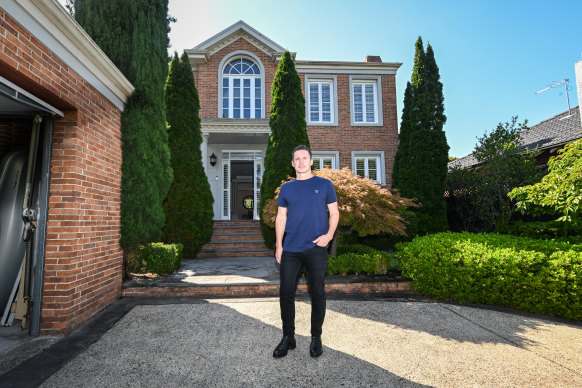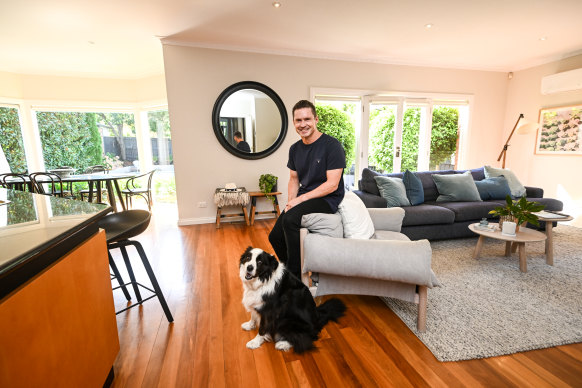This was published 1 year ago
The Melbourne suburbs where home downsizers can free up the most cash
By Jim Malo
Homeowners in wealthy inner-east suburbs stand to gain the most from downsizing to a smaller home in their neighbourhood, thanks to the large disparity in house and unit prices in Melbourne.
The largest gap was in blue-chip Toorak, which has the most expensive median house price on Domain data at $4,725,000 – costing almost $3.73 million more than the median unit price of $995,500.
It was followed by Malvern, which had a gap of $2,158,750, Balwyn ($2.05 million), Hawthorn East ($1,886,000) and Kew ($1.88 million). They were among two dozen suburbs with a seven-figure sum separating house and unit prices, though medians were only recorded for suburbs with a minimum of 50 sales last year. The gap citywide was about $468,000.
Domain chief of research and economics Dr Nicola Powell said a large gap between house and unit prices was to be expected, but was more pronounced in more expensive suburbs, where the benefit for downsizers was strongest.
“If you go down from a house to a unit that will be the key way to unlock equity in your home,” she said. “When you look at these suburbs, these are the ones where when you purchase you hold for a long period of time.”
Homeowners were subsequently more likely to own their property outright, or have built up substantial equity, Powell said. When they released that capital by downsizing, they had sizeable sums to spend on their new smaller home or pass on to adult children hoping to buy – both of which could put upward pressure on prices.

Andrew Blew intends to move to a smaller property, as a big block and proximity to schools are no longer a priority. Credit: Justin McManus
The Demographics Group co-founder Simon Kuestenmacher said the trend of cashed-up downsizers was relatively new, thanks to runaway house prices in the new millennium.
“Traditionally speaking, downsizers would have been cash-strapped retirees. Now they’re people who bought on the cheap and they’ve generated a lot of wealth,” he said. “20 years ago people that were downsizing didn’t have that much money because their homes didn’t accrue that much wealth.”
High property prices were also working against downsizers though, Kuestenmacher said, as it meant they faced a higher stamp duty bill. Greater capital gains on larger homes could also delay them from making a move.
“Downsizing doesn’t sound all that attractive once property prices keep rising and rising,” he said. “For property that went up $60,000, $80,000, $90,000 a year, why would you downsize? [They might think:] ‘If I wait another year I get another $100,000’.”
Jellis Craig Hawthorn partner Peter Vigano said downsizers had recently been motivated by changes to land tax settings in Victoria.
Last year, the state government announced that a temporary COVID debt levy would be introduced for second homes and investment properties, which would cost an extra $1675 per year for homes worth $1 million.
“There’s been a trend of people selling the family home because they [also] own a beach house,” Vigano said. “They buy an apartment and make the beach house their primary place of residence. The land tax has brought forward decisions for a lot of people.”
The Agency partner Luke Saville mostly sells units in Hawthorn and surrounding suburbs. He agreed the land tax changes were spurring more downsizer activity.
“[It’s] had some serious implications,” Saville said. “They’re not forcing a family out of the family home, but if they’re downsizing they’ll bring it forward a year or two.”
Downsizing to a smaller block of land with a cheaper house, was also common, Vigano said, but becoming less lucrative due to worsening affordability.
“The golden rule of thumb used to be a 50/50. You sell for $4 million, buy something for $2 million and you have $2 million to keep for yourself,” Vigano said. “But now you’ll find you sell something for $4 million and have to buy for $4 million. But that’s why people are resorting to using the beach house and getting a city bolthole.”
Vigano had listed Canterbury resident Andrew Blew’s Compton Street home for sale; Blew’s family hope to move to a smaller property in a neighbouring suburb like Hawthorn.

Blew said his peers were also making moves to “rightsize” to smaller houses.Credit: Justin McManus
Blew’s children were still at home, but they decided to move into a more manageable house on a smaller block, to future-proof and adjust to the family’s needs.
“We’re saying [we’re moving] sideways. We don’t need to have the same scale of property in Hawthorn … you get to live closer to the city, but you don’t have the need for all the land you do when you have younger kids,” he said.
“We originally bought the house because of the proximity to the schools and the communities surrounding the schools. We’re trying to set up for what comes next. It’s more than what we require, thinking to the future.”
Powell said extra demand from downsizers was likely to be absorbed by a buoyant property market, where listing numbers had continued to improve since the start of the year.
“Listings are rising, and we have an environment where buyers have a bit more choice than last year,” she said. “There is that interplay between supply and demand of course but when you look at the supply side it’s better than it has been.”